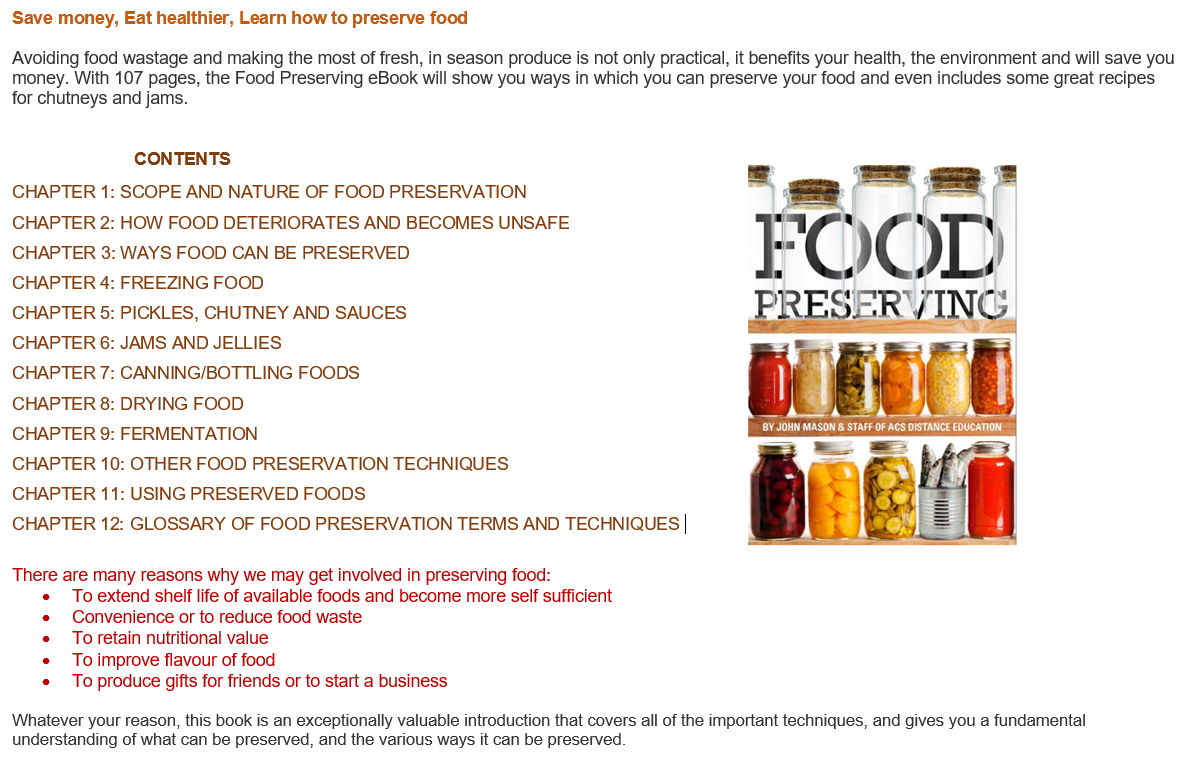
Action of Sugar
When sugar is added to foods it binds to the water in the foods reducing the amount of water that is available for the growth of microorganisms. Like salt water also has an osmotic effect i.e. when foods are placed in a concentrated sugar solution water is drawn out of the cells of foods and microorganisms so that microorganisms can no longer survive.
Different ways of using sugar to preserve foods are described fully in chapter 6. One way to use sugar is to desiccate fruits by drying them and then packing them with pure sugar. Fruits which are traditionally preserved through this method include ginger, cherries and the peel of citrus fruits. Alternatively foods may be stored in a sugar syrup or cooked in sugar until they crystalise.
To produce jams and marmalade, fruits are initially boiled to reduce the water content of fruit and to reduce contaminating microorganisms. Sugar is then added to the fruit to prevent the regrowth of bacteria.
Other food preservation techniques involve combining sugar with alcohol to enable the preservation of fruit in alcoholic spirits such as Brandy (alcohol).
Sugar is also used with salt to preserve certain foods especially fish and meat. Sugar may either be added to salt to create a dry mixture which covers food or may be dissolved in a liquid to make a brine to surround the food. Adding sugar to a salty brine helps to confer a sweetness to meat and fish and also helps to reduce the harsh flavour of salt.
Considerations when using sugar in home preservation
While sugar can act as a preservative in a controlled water tight environment such as a sealed jar, sugar itself attracts moisture so where water is available e.g. moisture in the air, sugar will attract water and the resulting environment will become more attractive to microorganisms such as yeast.
The value of sugar in food preservation is dependent on the amount of sugar used and adding too little sugar to a food will still enable the development of microorganisms. This is seen in the production of jams and jellies where adding too little sugar promotes the growth of mold and yeast.
As with salt, adding too much sugar to food affects the health benefits of the food. Firstly sugar and sugary foods are a primary source of dental caries (tooth decay). In addition sugar provides us with empty calories- that is calories but no additional nutrients. An excess consumption of sugar is associated with obesity and conditions associated with obesity such as diabetes and heart disease.
Due to the health effects of sugar you may consider reducing the amount of sugar used in home food preservation but remember that any reduction in the sugar concentration of a product can make a food more susceptible to microorganisms. In addition, while the use of an artificial sweetener to replace sugar can help retain the taste of a product, artificial sweeteners do not have the same preservative action of sugar, this is why sugar free jams and marmalade must also be refrigerated to aid their preservation.
FOR MORE:
Study online microcredential courses for a very low monthly fee -even just 1 month is OK. Lots of Food preserving courses among others to choose from https://www.learnhowto.uk/
Watch this video developed by our staff: